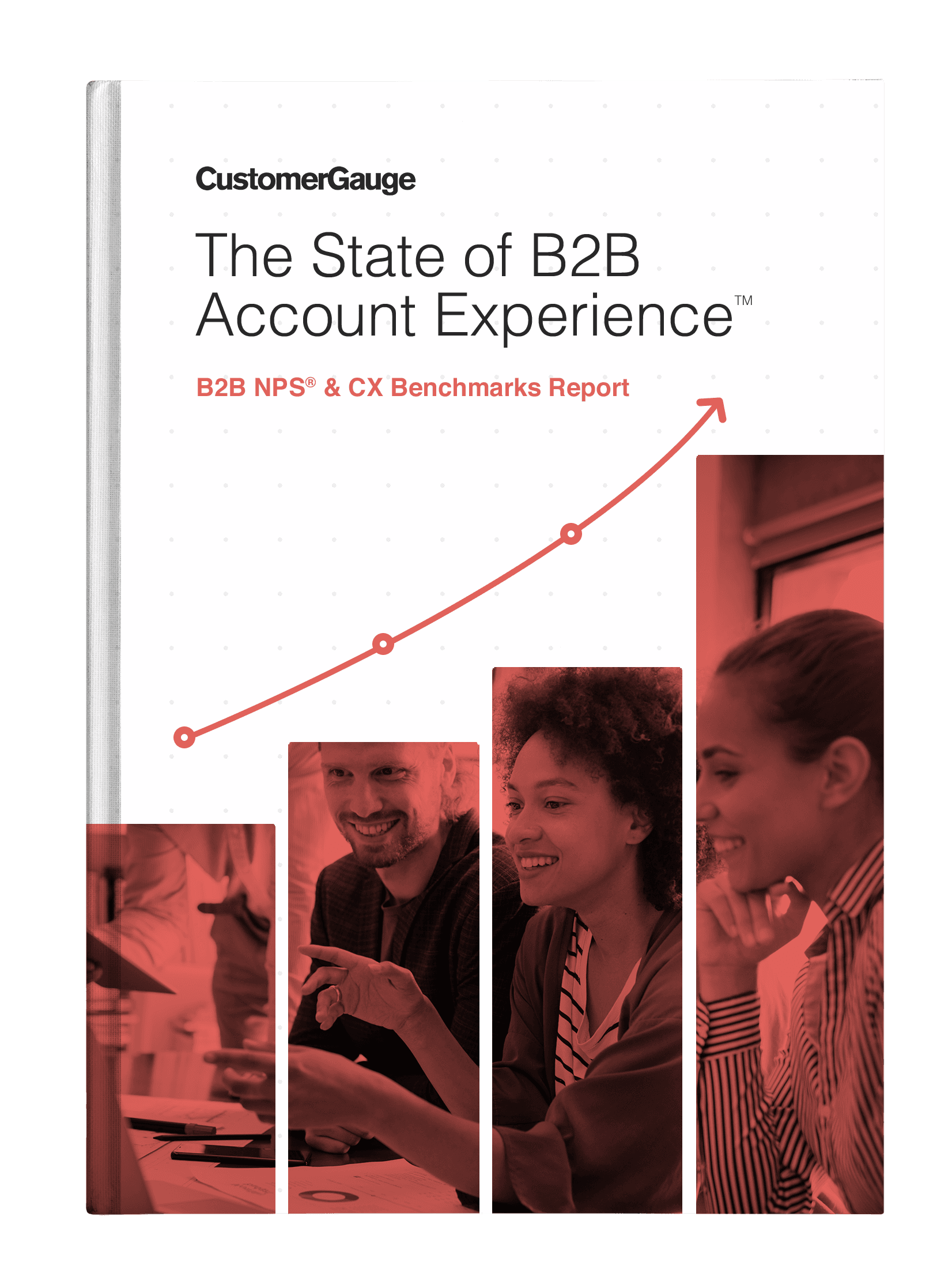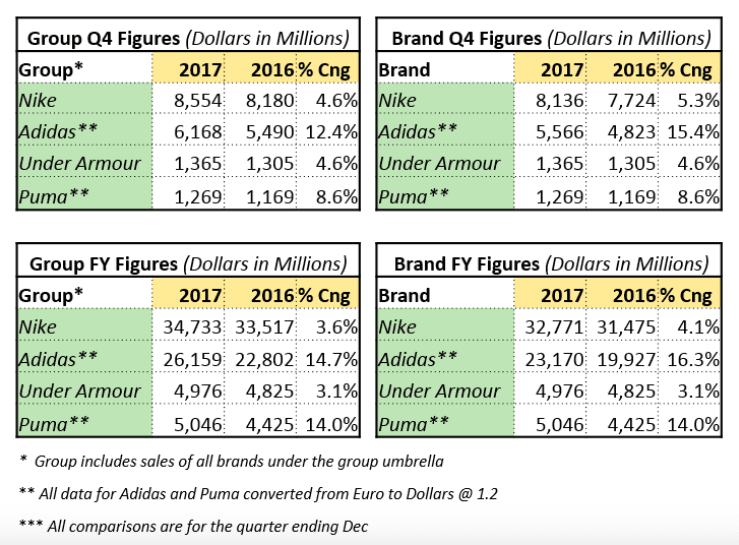adidas—How the Leader in Sports Apparel Uses NPS® to Stay Ahead of the Pack
by Cvetilena Gocheva
adidas , one of the largest sportswear companies in the world, was founded almost a 100 years ago in 1924 in Bavaria, Germany. In the early days, adidas primarily made active shoes, but the company now boasts a wide line of sportswear and sports equipment that puts it in direct competition with the likes of Nike and Puma.
That competition is beginning to fall behind though. adidas has been recently doing incredibly well financially, its first quarter sales in 2016 are up 22%, to roughly $5.4 billion and net income up 38%.
Since then, finances have continued to climb for the company. Over the course of 2017, adidas had a greater percent increase in all of its profits than Nike, Puma, or Under Armour. And adidas has the highest Net Promoter Score (NPS); it sits high at +49, up from 28 in 2013. In comparison Nike, the increasingly tentative frontrunner in sportswear, has an NPS of 32.
What is adidas doing that is launching it ahead of its competition? adidas former CEO Hebert Hainer has credited the recent success to a plan the company put together to focus on its customers: “...we are absolutely convinced that brand leadership and a consumer-centric approach is a significant contributor to the excellent momentum our group is currently enjoying and ensures that the current success is much more sustainable.”
How is the company focusing on the customer? They’re getting an incredible amount of customer feedback. They’re then evaluating that feedback using their Net Promoter System®. Once that data has been gathered and analyzed, adidas takes action to address what the data reveals is working, or not working, in the company in the eyes of customers.
How adidas is Tapping into Customer Feedback to Increase their Fanbase
adidas has committed itself to a “consumer-obsessed mindset” since 2015, when it began using the Net Promoter System. Net Promoter® places the customer at the forefront of all business decisions, with the goal of improving their customer satisfaction, and of soaring above the competition.
With a new management team at the helm, adidas formed the Experience NPS Panel according to their 2016 Calling All Creators report. As such, adidas focuses on obtaining customer feedback in an effective way and using that to drive improvements and business directions. The panel monitors the customer feedback for online purchases via email and during in-store checkout.
Thanks to all this surveying, adidas received over one million customer responses, in 14 languages, reflecting a diverse customer pool. This was more than the Experience Net Promoter Score Panel was expecting, and has proven to be highly valuable to the company since.
Thanks to customer feedback, adidas was made aware of issues that “hadn’t even occurred to us but had stuck in the consumer’s mind,” said Alexandra Meier, Senior Director Consumer Operations. Examples of this include refunds taking a long time to reach US customers, as well as customers only learning an item was out of stock in their last step on the purchase page. With this information, the company was able to improve on these issues and reduce churn among customers.
Meier points out that more than half of millennials, a big modern market, judge a brand by how it treats its customers. By being “consumer-obsessed,” adidas is taking this scrutiny seriously, and training its staff accordingly. Employees take a short, specialized course to learn how to have in-depth conversations with customers that consented to being contacted again later after giving feedback. This has resulted in a lot more reporting on feedback from store managers and those at all levels within adidas (as any employee can take this course and be part of these conversations).
Internal communication is also improving at the company because of this, just as external communication with customers is via this feedback. This upward trend of encouraging employee-customer communication is likely to only keep getting better, as employees are incentivized via bonuses to get customer feedback, and communicate it to other parts of the company.
How Net Promoter Made It All Possible
NPS is a beautifully simple metric. It asks just one question: “On a scale of 0 to 10, 10 being the highest, would you recommend this company to a friend?” From these scores, we can piece together what customers are promoters, passives, and detractors. Promoters are customers that give a score of 9 or 10, and are so pleased with a good or service they’re recommending it to others. adidas likes to label these customers as “advocates,” and notes they buy more than non-advocates, and they also help with other sales via referrals, as consumers are more likely to buy on recommendation than not. Passives score at 7 or 8, and don’t have problems with a company, but aren’t promoting it either. They are still called “non-advocates” at adidas, along with detractors, who score between 0 and 6. Detractors are often bad mouthing a company, and have needs to be addressed. Addressing these needs quickly is very much in a company’s best interest, and adidas does that, as well as finding complaints from this group to be particularly informative, as we discussed with the unexpected customer complaints above.
This kind of quick customer and complaint identification is precisely why adidas invested so heavily in the rollout of their NPS system in 2015, former CEO Hebert Hainer saying the system “allows us to constantly listen and respond to our consumer needs,”. NPS also demonstrates how the brand is doing within specific groups adidas is concerned with. They can see the scores of women in China, or young people in Moscow, and see if there are more promoters or detractors in these markets, and what can be done to maintain or alter that trajectory. Stefan Bögle, Senior Director Strategic Insights & Analytics at adidas, said “We can see whether the sum of all of our marketing activities and our product offering...is helping boost our desirability.” Brand desirability remains one of adidas’ five main criteria to consider, and NPS is helping them do that.
NPS also allows adidas to think about brand desirability in the future. They can see trends in the Net Promoter Scores and comments, and how they alter over time, perhaps finding a pattern, or a particular group to target and further observe. Employees can access adidas’ collected data easily, for company transparency, but also just to get more eyes on the information. More people means more chances for innovation and improvement, and keep the employees engaged as customers are engaged.
This type of data is a highly valuable tool, but only if it’s used for something more. As adidas put it in its 2016 report:
“The ultimate question, therefore, is not really whether a consumer might recommend a brand, or why. It’s what the brand does with that knowledge that counts – translating it into tangible improvements, converting critics and ‘floating consumers’ into long-term fans and, ultimately, generating sustainable momentum for the brand.” - adidas 2016 Calling All Creators report
adidas is collecting customer feedback with NPS methods and metrics, and is following through on what it learns, completing the cycle and finding incredible success in the process.
Driving Business Decisions with NPS-Backed Data
One of the main ways adidas is following up with data generated from NPS customer feedback is addressing complaints. Refunds and returns are now much faster for US customers, and you can now see if a product is out of stock in the selection stage of the purchasing process, rather than at the end. The company continues to focus in on particular customers and customer groups to address other concerns, and has “significantly upgraded” its consumer profiling to continue this trend.
adidas also changed some of its internal structuring in order to adapt to the needs of customers. The Experience NPS Panel was formed, and the Brand Management and Concept-to-Consumer units were consolidated. A new business called Core was formed in 2017 to address customers across different categories, and the Creative Direction and the Future Team were also consolidated. The company continues to expand and profit, so this restructuring worked well.
Real effort was also made to continue the success of adidas stores: In 2016, the highest Net Promoter Scores came from in-store customers, so effort was made to maintain that, changing up some of the store staging and product display. It paid off, and the stores still have high customer approval, helping sales further. It also helped adidas think about its products, and how those could change after customer feedback.
Beyond using feedback to driving internal decisions and various channels, adidas is also using feedback to deliver new product features. adidas aimed to change how its sneakers are made this year, preparing factories for new materials and products, including recyclables.
Conclusion
adidas has made great use of NPS, and its methods, and the company is soaring because of it. It is projected to be the new frontrunner in sportswear, upsetting longtime king of the heap Nike in the next few years. Any company can do what adidas did, and hyperfocus on their customers to great effect. Using NPS as the means of delving into that focus is just the best way to do it!
Blog Home









